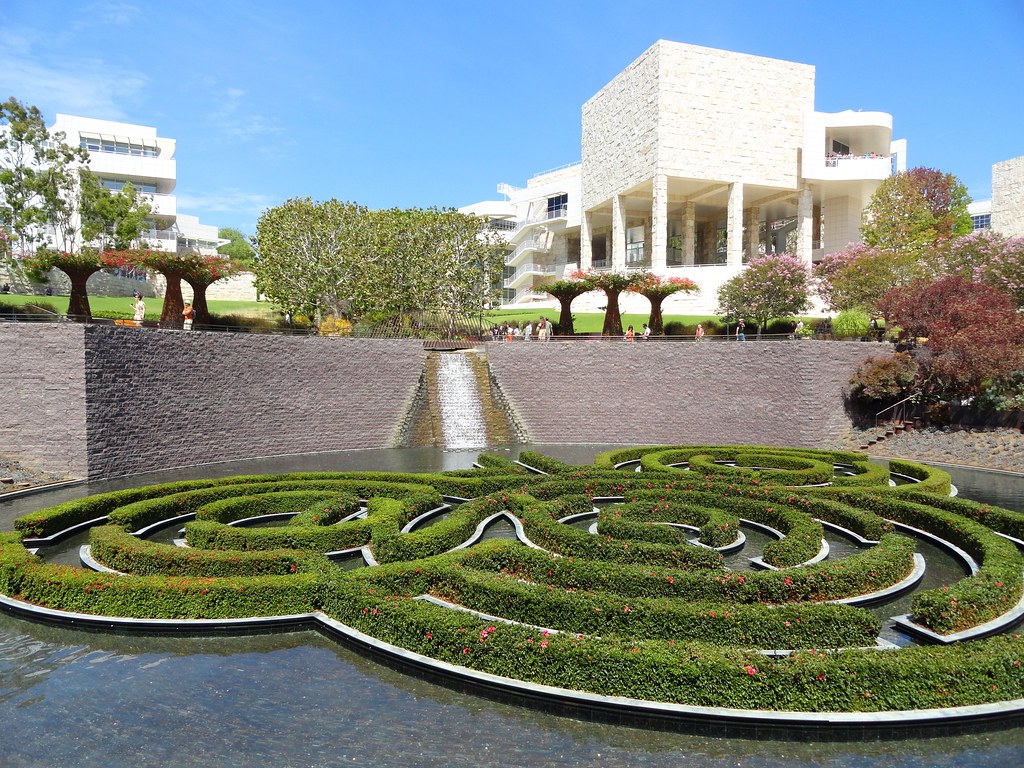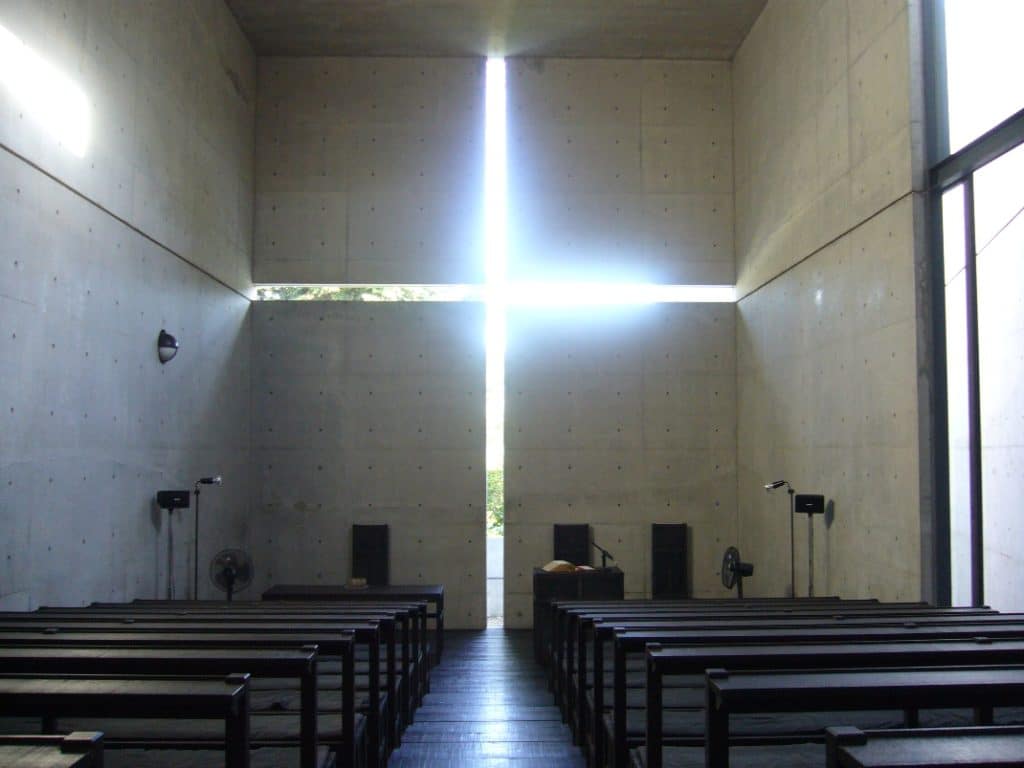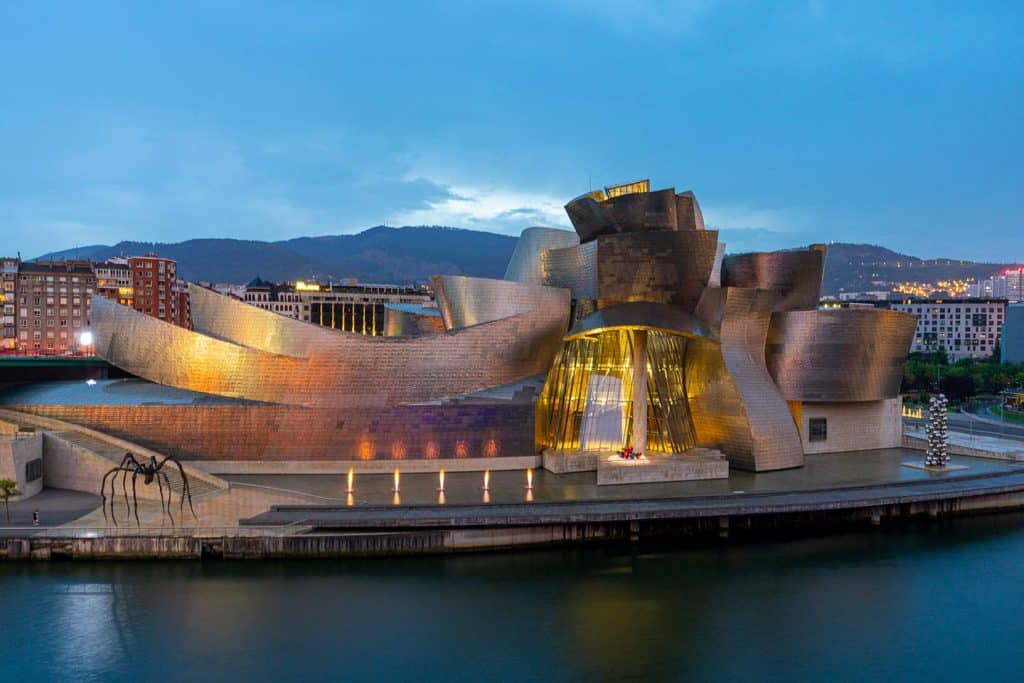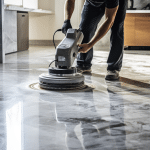Contents
Polished concrete floors are not only visually appealing but also durable and easy to maintain. Whether you want to spruce up your home or enhance the aesthetics of a commercial space, polishing concrete floors can be a cost-effective solution.
It usually takes a lot of effort to transform your dull concrete surfaces into stunning, glossy floors that will leave a lasting impression. To ease this process, you’ll need professional concrete services.
Preparing for Polishing
If you decide you can manage floor polishing independently, the following steps are for you! But before diving into the polishing process, preparing your concrete floors properly is important.
You need to:
- Clean the floor with the vacuum cleaner and mop if needed;
- Repair cracks or imperfections with a two-part concrete epoxy resin;
- When the epoxy is dried and polished, assess the concrete’s hardness.
After these small steps, you aim to have a solid, smooth surface.
Equipment and Safety
The right tools and equipment are essential in every DIY project.
Consequently, for polishing concrete floors, you’ll need the following:
- Diamond abrasive pads;
- Concrete grinder;
- Dust extraction system.
You must also follow safety precautions, including protective gear and proper ventilation. This way, you’ll feel like a trustworthy professional concrete contractor.
Polishing Process
Concrete floor polishing is a meticulous process that involves several essential steps to transform a dull and uneven concrete surface into a smooth, glossy masterpiece. The journey begins with the initial grinding phase, where you remove surface imperfections and unevenness to create a level foundation.
This step prepares the floor for further polishing and helps to enhance its overall appearance.
After the initial grinding, the process goes into the next phase, transitioning. You should refine and smooth out the surface during this stage to eliminate any remaining imperfections. This step is crucial in preparing the concrete for the subsequent polishing stages, ensuring a flawless result.
The next step in the concrete floor polishing process is fine polishing. It involves progressively using finer grits (usually starting with 40) to achieve the desired level of gloss and clarity. Skilled technicians work diligently, carefully moving from coarser to finer grits until they reach the desired shine and smoothness. As mentioned, this intricate process requires expertise and precision to achieve outstanding results. That’s why sometimes it’s better to ask for concrete contractor help.
Concrete service workers use a densification stage to improve the concrete’s durability and stain resistance. It means the application of a densifier, which penetrates the concrete surface and chemically reacts with it, creating a more rigid and durable floor. Densification improves the concrete’s resistance to wear and tear and boost its overall strength and longevity.
The final step in the concrete floor polishing process is applying a stain guard. This protective sealer acts as a shield, safeguarding the polished surface from spills, stains, and other potential damages. The sealant prolongs the lifespan of the polished floor and adds an extra layer of shine.
Maintaining Polished Concrete Floors
Proper maintenance helps to preserve their beauty once you’ve successfully polished your concrete floors.
The following simple tips will help you keep your concrete floor new for as long as possible:
- Regular cleaning is your key to success;
- Avoid abrasive materials that can damage concrete surfaces;
- Address any potential issues that may arise over time quickly. Don’t let a small crack turn into the whole web on your floor.
If you have any trouble doing this alone, don’t hesitate to contact an experienced concrete contractor like WillFix. We know about concrete and underpinning basements everything and more! So concrete polishing and maintenance will go smoothly and quickly.
Interesting Facts about Concrete Floors
Polished concrete has emerged as a popular choice in architectural design, offering a myriad of possibilities to create stunning and unique buildings that leave a lasting impression. Several famous buildings around the world have embraced polished concrete as a critical element, showcasing its versatility and aesthetic appeal.
One such notable structure is the Getty Center in Los Angeles, California. Renowned architect Richard Meier designed the Getty Center, which features a sleek and modern look. The exterior of the building is adorned with polished concrete panels, creating a striking visual contrast against the surrounding natural landscape. The reflective surface of the polished concrete not only adds a touch of elegance and captures and reflects the changing light throughout the day, giving the building an ever-changing appearance.

Another iconic building showcasing polished concrete’s beauty is the Tadao Ando-designed Church of the Light in Osaka, Japan. Known for his minimalist approach, Ando incorporated polished concrete into the church’s design to create a serene and contemplative space.
The walls and floors of the church are made of polished concrete, providing a sense of simplicity and purity. The smooth surface of the concrete, combined with the play of light and shadows, creates a tranquil atmosphere that enhances the spiritual experience of visitors.

The Guggenheim Museum Bilbao in Spain, designed by Canadian-born American architect Frank Gehry, is yet another testament to the unique design possibilities offered by polished concrete. The museum’s exterior features undulating curves and a titanium-clad surface, but the interior embraces polished concrete.
The flat and reflective floors provide a seamless transition between the exhibits, while the polished concrete walls add a touch of modernity and sophistication. This combination of materials creates a visually stunning space that complements the museum’s collection of contemporary art.

Concrete polishing opens a new dimension of design possibilities, allowing architects and designers to experiment with texture, colour, and pattern. You can customize polished concrete by using different aggregates and pigments to create a wide range of effects. From exposed aggregate finishes that reveal the natural beauty of the stone to integrally coloured concrete that adds a splash of vibrant hue, the design options are endless.
Additionally, intricate patterns and designs can be created using stencils or etching techniques, further enhancing the visual appeal of polished concrete surfaces. Such practices produce stamped concrete, about which you can read more in our previous article, “The Complete Guide on Stamped Concrete.”
Beyond its aesthetic appeal, polished concrete also offers practical benefits for buildings. Concrete hardness, durability and resistance to staining make it an ideal choice for high-traffic areas such as museums, airports, and commercial spaces. Moreover, the reflective properties of polished concrete can help maximize natural lighting, reducing the need for artificial lighting and contributing to energy efficiency.
Are You Ready to Get Polishing?
Polished concrete has become synonymous with innovative architectural design, as demonstrated by the inclusion of this versatile material in several famous buildings worldwide. It has proven its ability to boost the aesthetics of any space.
With concrete’s endless design possibilities and practical advantages, it is no wonder that polished concrete continues to be a favoured choice for architects and designers seeking to create unforgettable structures that stand the test of time.
Congratulations! You have also now mastered the art of DIY polishing concrete floors. Following this guide, you can transform any concrete surface into a stunning focal point that will impress visitors and stand the test of time. Proper preparation, equipment, and regular maintenance are the cores to achieving exceptional results.
Concrete Floors FAQ
-
What design possibilities does concrete polishing offer?
You can experiment with texture, colour and pattern to create unusual designs.
-
Why polished concrete remains the choice for architects and designers?
Polished concrete remains the material of choice because of its limitless possibilities and practical advantages.
-
What skills and knowledge do professionals need to fine polish a concrete floor?
Concrete floor polishing requires precision skills and knowledge of the use of abrasives of different grits.
-
What are the main challenges of the concrete floor fine polishing process and why is it important to go to contractors?
The complexities of the polishing process are related to the need for precision and accuracy, as well as the proper selection of abrasives. Contacting contractors helps to avoid mistakes and get a quality and long-lasting result.
